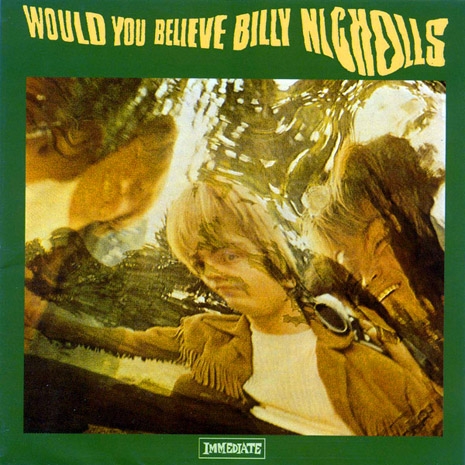
I have a pretty strict rule for record shopping. Anything that catches my fancy can go in the bag for any reason, but there’s a $30 per platter limit. Not $31.99, not $30.01, $30, period. This applies to new AND used vinyl, and it’s kept me on the terra firma side of some potentially stupid financial cliffs. The specific figure was a compromise I devised to let me possess an original copy of PiL’s 3X12” Metal Box so long as I got one VG+ for $90 or less (which wasn’t so difficult—in fact I landed one on a routine dig for $75), but to keep me from impulse-spending idiotic cash on rarities I would probably barely listen to and only keep around as useless trophies of successful hunts.
Hence, I find the very idea of a record worth thousands of dollars utterly absurd and even a bit sickening, especially when the CD version can be had for a buck or two—sorry “connoisseurs,” but if you care $1,000 more about the format than the song, you’re not a music lover, you’re a baseball card collector—but the obsession still fascinates me, because I know I’m a part of the pathology. The main difference is in the degree of restraint to which I hold myself, and not because I’ve such a strong and resolute character, but because I know I don’t.
So I’m always interested to read the blog posts on discogs.com running down the highest sale prices logged in its music media marketplace. Oftentimes such sought-after items are deep obscurities of genuine archival interest, but a lot of the time it’s some asshole who unaccountably blew over $1,600 (actual recent sale price) on an O.G. copy of Earth A.D. just because he could (and it’s invariably a “he”), even though multiple subsequent pressings are plentifully available in the $5-10 ballpark. But recently a staggering $10,300 became the new going rate for Would You Believe, the 1968 debut album by a British songwriter named Billy Nicholls.
Part of this is accounted for by the particular copy’s condition (excellent), and part by extreme scarcity—it was never actually released, so only about 100 copies exist, all of them promos, and one went for £7,312 (ballpark of $9,000 USD) in 2009. Nicholls himself isn’t exactly an unknown figure, in fact his decades-long career is still going. His “I Can’t Stop Loving You (Though I Try)” had been a hit in the ‘70s, ‘80s AND ‘oughts by artists as head-swimmingly diverse as Leo Sayer, The Outlaws, Phil Collins, and Keith Urban, and Nicholls has often collaborated with Pete Townshend.

But enough about his behind-the-scenes bona fides, the story of Would You Believe is a quite captivating one. Nicholls’ talents were singled out by erstwhile Rolling Stones manager Andrew Loog Oldham after his falling-out with that band, and like Chas Chandler going all in on Jimi Hendrix, Oldham devoted significant energies to making Nicholls a very big deal. From The Rising Storm:
The single [“Would You Believe”] has been described as “the most over-produced record of the sixties”, and with reason; a modest psych-pop love song, it’s swathed in overblown orchestration including baroque strings, harpsichord, banjo (!), tuba (!!), and demented answer-back vocals from Steve Marriott. A trifle late for the high tide of UK psych, it failed to trouble the charts. Unfazed, Oldham and Nicholls pressed on with the album, Nicholls providing a steady stream of similarly well-crafted ditties and a bevy of top-rated London session men providing the backings, thankfully with somewhat more subtlety than on the prototype cut. The album was ready for pressing just as the revelation of Oldham’s reckless financial overstretch brought about Immediate’s overnight demise, and only about a hundred copies ever made it to wax, most of which somehow surfaced in Sweden. The album became one of the mythical lost albums of the sixties, and original copies now fetch over a grand in GBP.
The record was intended by Oldham to be an acutely British answer to Pet Sounds—evidently nobody told him about Sgt. Pepper’s Lonely Hearts Club Band—and a look at the session details confirms that Oldham was NOT fucking around. Studio musicians for the sessions included members and future members of bands like The Small Faces, Humble Pie, and Led Zeppelin, plus Stones/Kinks pianist Nicky Hopkins. But not unlike The Kinks Are the Village Green Preservation Society, its Edwardian harpsichord whimsy, sunshiney loopiness, and baroque production saw a release date just a hair too late for the initial psych moment, after rock music had moved on to harder stuff, so it’s hard to say it would have done well even if it had been released (Village Green is rightly regarded as a classic NOW, but remember, it totally tanked in its day).
Continues after the jump…





